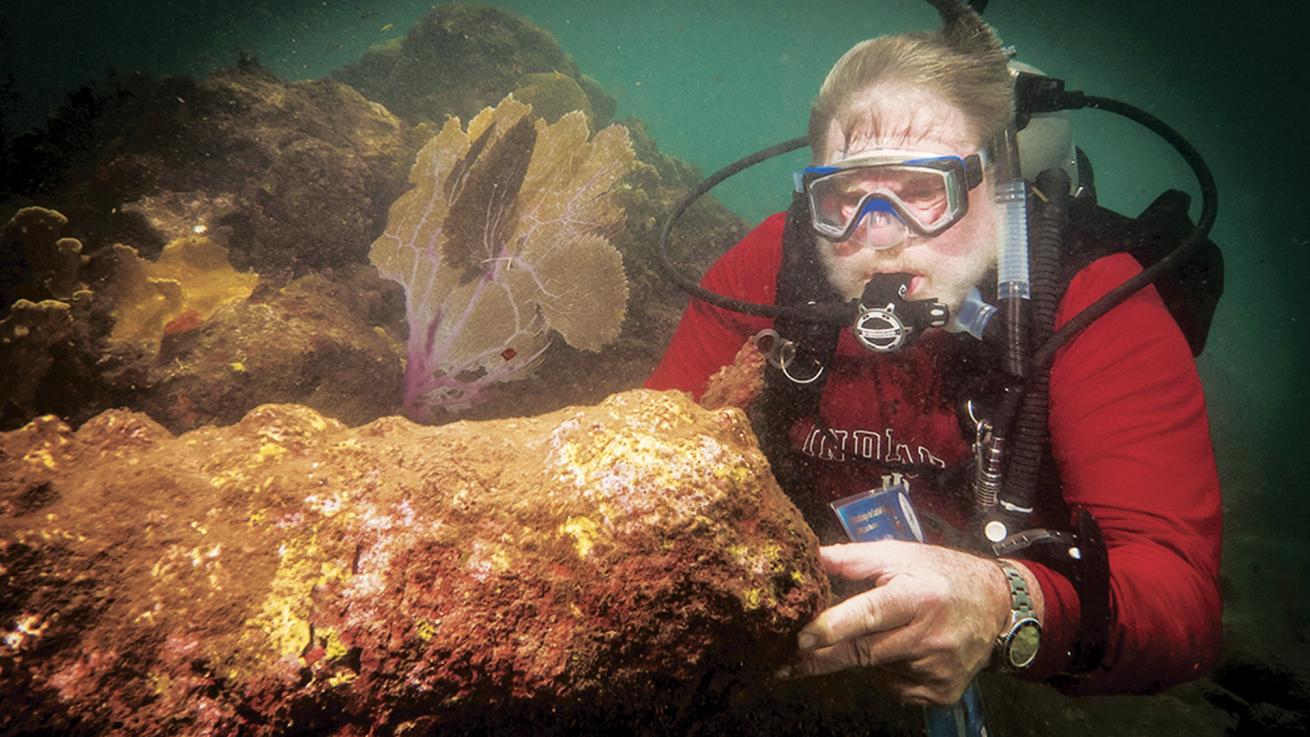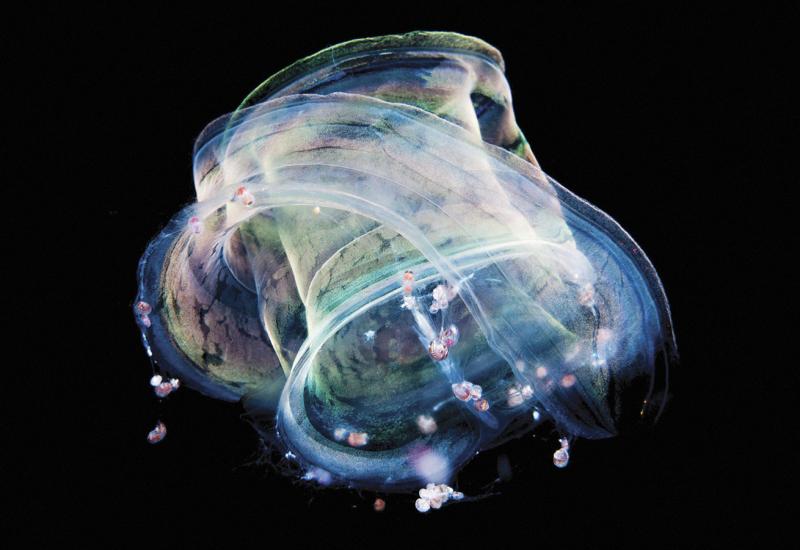What It's Like to Be an Underwater Archaeologist

COURTESY OF THE INDIANA UNIVERSITY CENTER FOR UNDERWATER SCIENCEBeeker observes part of Capt. Kidd's Quedagh Merchant wreck in the Dominican Republic.
Charles D. Beeker knows a thing or two about shipwrecks. As a leading academic in the field of maritime archeology, he’s played an integral role in advocating for the protection and management of historically significant shipwrecks, and as the director of the Center for Underwater Science and Academic Diving Program at Indiana University, he’s helped educate many of the people now working in the management of submerged cultural resources for organizations like the National Park Service, the American Academy of Underwater Sciences and the Office of National Marine Sanctuaries.
“Wrecks used to be something you’d go down and take a brass porthole as a souvenir, but these are finite resources,” Beeker says. “Today, rather than going out looking for new shipwrecks, we focus on sites that already have pressure. We’re looking at how can we enhance them and protect them for the future, instead of allowing them to get salvaged or looted by treasure hunters.”
Related Reading: The Art of Diving for Shipwrecks and Treasure
To be considered historic, a shipwreck must be older than 50 years, and to be significant, it must be connected to a historical person and event in some way. “Not all shipwrecks are historic, and not all historic shipwrecks are significant,” Beeker says. “We’re not making any new historically significant shipwrecks anytime soon, but there’s a lot of work to do to help uncover and preserve what’s still out there.”
Over his 50-year career, Beeker has racked up a long list of accomplishments, including being part of the committee that established the Abandoned Shipwreck Act in the 1980s and a member of the Marine Protected Areas’ federal advisory committee. His academic teams have worked to document and preserve shipwreck sites from the Great Lakes and California to the Florida Keys and the Dominican Republic, where they helped establish protections for the shipwreck site of Captain William Kidd’s Quedagh Merchant.
“Working with the Ministry of Culture in the Dominican Republic, our advice was ‘you can only sell it to a treasure hunter once, or we can make it into a park,’” he explains. “Today, it’s the only academically preserved pirate ship in the Caribbean—it deserves to be protected.”
In the water, Beeker and his teams document and monitor shipwreck sites over time. One indispensable tool is photogrammetry, which creates 3D models from overlapping images. “Photogrammetry is a core skill we teach our academic divers,” he says. “They collect thousands of images from a single shipwreck site, and we use those to generate models for things like site plans, brochures and interpretive materials. These days, if you don’t have photogrammetry in your tool kit, you’re not documenting a site correctly.”
While Beeker started his career as an underwater archaeologist, he says archeology is just one skill required for today’s work of managing and preserving submerged cultural resources. “You need an archaeologist, sure, but also a biologist, someone to lead coral restoration work, someone with journalism skills to tell the stories,” he says. “I tell students there’s no such thing as a major in scuba—scuba is the tool we use to go underwater to accomplish all these other objectives.”
Related Reading: How Underwater Mapping Is Changing the Dive World
Job Requirements
Degree: Master’s or Ph.D. in marine archaeology or related field
Salary: Starting around $70,000
Certifications: Rescue Diver, Occupational Scientific Diver, PADI Wreck Diver, Full Face Mask Diver and Digital Underwater Photographer










